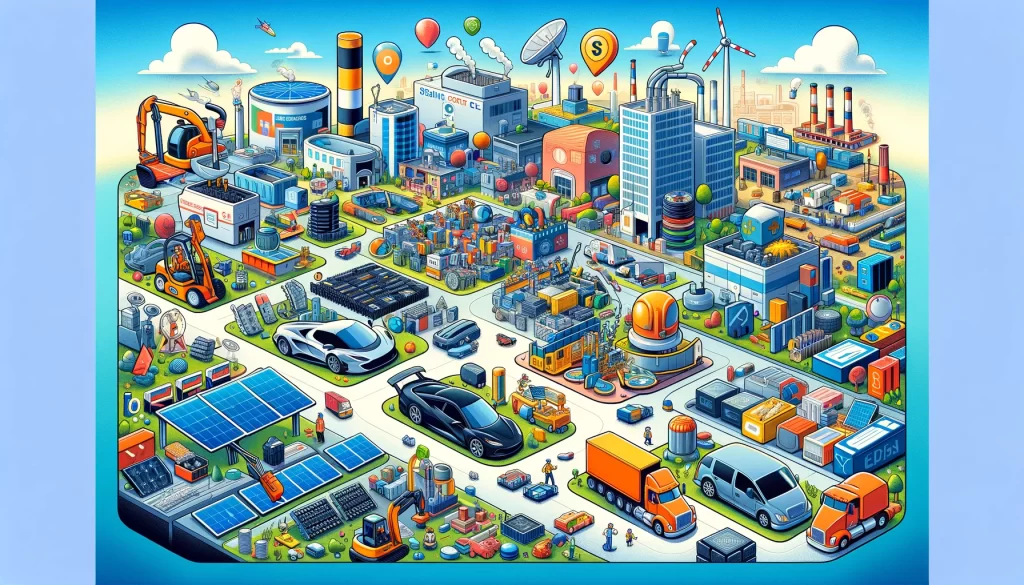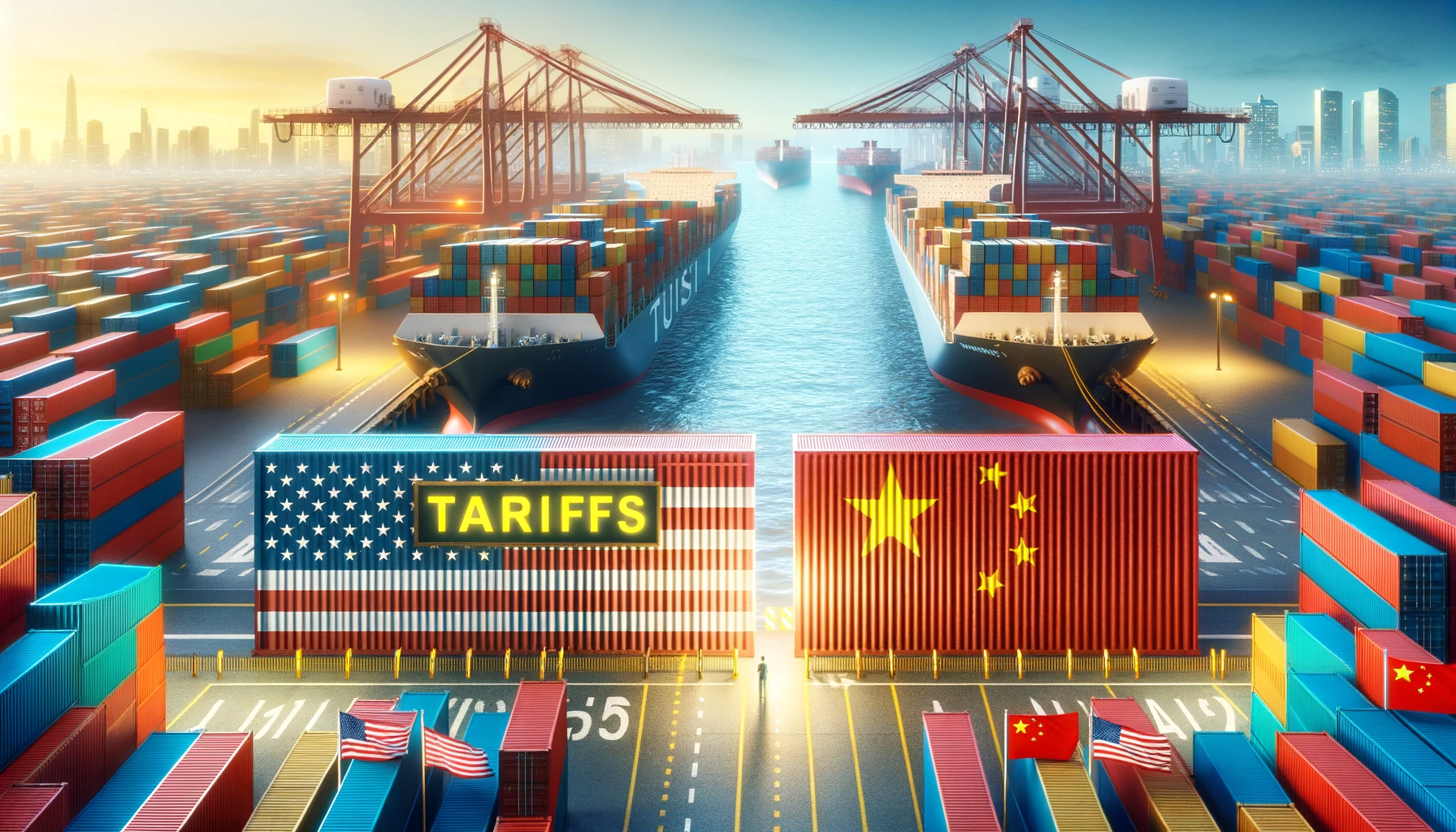On Tuesday, President Joe Biden announced a substantial increase in tariffs on various Chinese imports. This move aims to protect American industries from what his administration describes as unfair competition from China. The new tariffs target strategic sectors, including electric vehicles (EVs), solar cells, semiconductors, and other critical goods. Building on the tariffs imposed by former President Donald Trump, Biden’s decision reflects a strategic approach to safeguarding U.S. economic interests and reviving domestic manufacturing.
Background
Since China joined the global trading system nearly 25 years ago, it has employed a range of strategies to dominate various industries worldwide. These include generous state support through easy credit, free or low-cost land, and a labor force with few rights. U.S. officials have long accused China of unfair trade practices such as forced technology transfers, intellectual property violations, and cyberhacking, which have given Chinese industries a significant advantage in global markets. According to Lael Brainard, director of the White House National Economic Council, “China is using the same playbook it has before to power its own growth at the expense of others by continuing to invest despite excess Chinese capacity and [by] flooding global markets with exports that are underpriced due to unfair practices.”
Details of the New Tariffs
The new tariffs will affect approximately $18 billion worth of Chinese goods annually. The most notable increase is on EVs, with tariffs rising from 25% to 100%. This move aims to protect the emerging EV market in the United States from a flood of cheaper Chinese models. According to Michael Dunne, an auto industry consultant, “This is all about stopping the flood before it begins.” Other significant tariff increases include:
- Solar cells: from 25% to 50%
- Semiconductors: from 25% to 50%, effective by 2025
- Lithium-ion batteries for electric vehicles: from 7.5% to 25%
- Various steel and aluminum products: from 0-7.5% to 25%
- Medical products such as syringes and needles: from 0% to 50%
- Cranes used to unload container ships: from 0% to 25%
Some tariffs, such as those on certain medical products and industrial machinery, will be phased in over the next few years.
Reasons for the Tariffs
The Biden administration’s primary goal with these tariffs is to prevent low-cost Chinese products from overwhelming American markets and undermining domestic industries. By increasing tariffs, the administration seeks to encourage domestic production, protect American jobs, and foster growth in strategic sectors. President Biden emphasized his commitment to ensuring that the future of electric vehicles is made in America by union workers.
Administration officials argue that these actions are necessary to counter years of unfair trade practices by China. “China’s simply too big to play by its own rules,” said Lael Brainard. The administration also aims to reduce the U.S. economy’s dependence on Chinese products and ensure a more balanced global trade system. Treasury Secretary Janet L. Yellen highlighted the risks posed by China’s excess industrial capacity, stating, “We will not allow cheap Chinese exports to harm American workers”.

Comparison to Trump’s Tariffs
While both the Trump and Biden administrations imposed tariffs to address trade imbalances with China, their approaches differ significantly. Trump’s tariffs were broad, covering a wide range of goods, while Biden’s tariffs are more targeted, focusing on strategic sectors like clean energy and advanced manufacturing. Biden has maintained Trump’s tariffs on over $300 billion worth of Chinese goods but has introduced new measures aimed at protecting specific industries.
Former President Trump had imposed tariffs on roughly two-thirds of Chinese imports starting in 2018. He campaigned on a pledge to impose a new 60% tariff on all Chinese products, which many economists warned would disrupt global supply chains and increase inflation. In contrast, Biden’s strategy involves “carefully targeted” tariffs intended to protect strategic sectors such as advanced computer chips, low-carbon energy, and key industrial materials.
Impact and Reactions
The new tariffs are expected to provide a protective shield for American industries against unfair competition and help revive domestic manufacturing. However, they have also sparked criticism and concerns about potential retaliation from China. The Chinese government has expressed strong dissatisfaction, stating that the tariffs violate the spirit of cooperation between the two countries. “China will take resolute measures to defend its rights and interests,” said a spokesperson for China’s Ministry of Commerce.
Economists and industry experts have mixed opinions on the tariffs. Some praise the move as a necessary step to protect American industries, while others warn that tariffs could lead to higher consumer prices. The National Retail Federation, representing companies that source or sell Chinese products, argued that the tariffs would act as a tax on American consumers. “As consumers continue to battle inflation, the last thing the administration should be doing is placing additional taxes on imported products that will be paid by U.S. importers and eventually U.S. consumers,” said David French, the group’s executive vice president of government relations.
Despite these concerns, the Biden administration believes that the long-term benefits of protecting strategic industries outweigh the potential drawbacks. Union leaders and many Democratic lawmakers have praised the decision, seeing it as a necessary measure to safeguard American jobs and industries. “It’s the correct response to a big problem that China is creating in its overproduction in key manufacturing sectors,” said Wendy Cutler, vice president of the Asia Society Policy Institute.
This article is based on the following articles:

Background Information
By understanding these concepts and historical contexts, readers can better grasp the significance of the recent tariff increases on Chinese imports and the broader implications for U.S.-China trade relations and the global economy.
What are Tariffs?
Tariffs are taxes imposed by a government on goods and services imported from other countries. The primary purposes of tariffs are to:
- Protect Domestic Industries: By making imported goods more expensive, tariffs encourage consumers to buy domestically produced goods, thus protecting local businesses and jobs.
- Generate Revenue: Tariffs provide a source of income for the government.
- Correct Trade Imbalances: Tariffs can help reduce a trade deficit by making imports more expensive and less attractive compared to domestic products.
U.S.-China Trade Relations
The trade relationship between the United States and China has been complex and contentious for many years. Here are some key points to understand:
- China’s Economic Rise: Since joining the World Trade Organization (WTO) in 2001, China has rapidly grown to become one of the world’s largest economies. This growth has been supported by extensive state subsidies, cheap labor, and aggressive industrial policies.
- Trade Imbalances: The U.S. has had a significant trade deficit with China, meaning it imports much more from China than it exports there. This imbalance has raised concerns about the impact on American industries and jobs.
- Accusations of Unfair Practices: The U.S. has accused China of engaging in unfair trade practices, including forced technology transfer, intellectual property theft, and cyberhacking. These practices have allegedly given Chinese companies an unfair advantage in global markets.
Strategic Industries
Certain industries are considered “strategic” because they are crucial for national security, economic stability, and technological leadership. Examples include:
- Electric Vehicles (EVs): As part of efforts to combat climate change, there is a global push towards electric vehicles. Dominance in the EV market is seen as crucial for technological and economic leadership.
- Semiconductors: These are essential components in modern electronics, from smartphones to military equipment. Controlling semiconductor production is vital for maintaining technological edge.
- Solar Cells and Batteries: These are key components in renewable energy technologies. Ensuring a strong domestic capability in these areas is important for energy security and economic competitiveness.
International Trade Practices
Understanding international trade practices helps provide context to the trade tensions between the U.S. and China:
- Free Trade vs. Protectionism: Free trade advocates argue for minimal restrictions on international trade, believing it leads to more efficient markets and lower prices. Protectionists, on the other hand, argue for tariffs and other measures to protect domestic industries from foreign competition.
- Trade Agreements: Countries often negotiate trade agreements to establish rules and reduce barriers to trade. However, disagreements over terms can lead to trade disputes and the imposition of tariffs.
- Impact on Consumers and Businesses: While tariffs can protect domestic industries, they can also lead to higher prices for consumers and potential retaliatory measures from other countries, impacting global trade relations.
Previous Tariffs and Trade Policies
- Trump Administration: President Trump imposed broad tariffs on Chinese goods starting in 2018, covering a wide range of products. These tariffs were intended to pressure China into changing its trade practices but were criticized for raising costs for American consumers and businesses.
- Biden Administration: President Biden has chosen to maintain many of Trump’s tariffs but is focusing on more targeted measures aimed at protecting strategic industries. This approach reflects a shift towards balancing free trade with the need to safeguard national economic interests.

Debate/Essay Questions
- Should the United States impose high tariffs on Chinese imports to protect domestic industries, or should it pursue free trade policies to lower consumer prices?
- Are targeted tariffs on strategic sectors like electric vehicles and semiconductors more effective than broad tariffs on a wide range of imports?
- Can tariffs effectively address unfair trade practices such as forced technology transfer and intellectual property theft?
- How do tariffs impact the relationship between the U.S. and China, and what are the potential long-term consequences for global trade?
- What role should government subsidies play in supporting domestic industries, and how do they compare to tariffs as a policy tool?
- In what ways can the U.S. ensure that its tariff policies do not disproportionately affect low-income consumers?
Please subscribe to Insight Fortnight, our biweekly newsletter!
